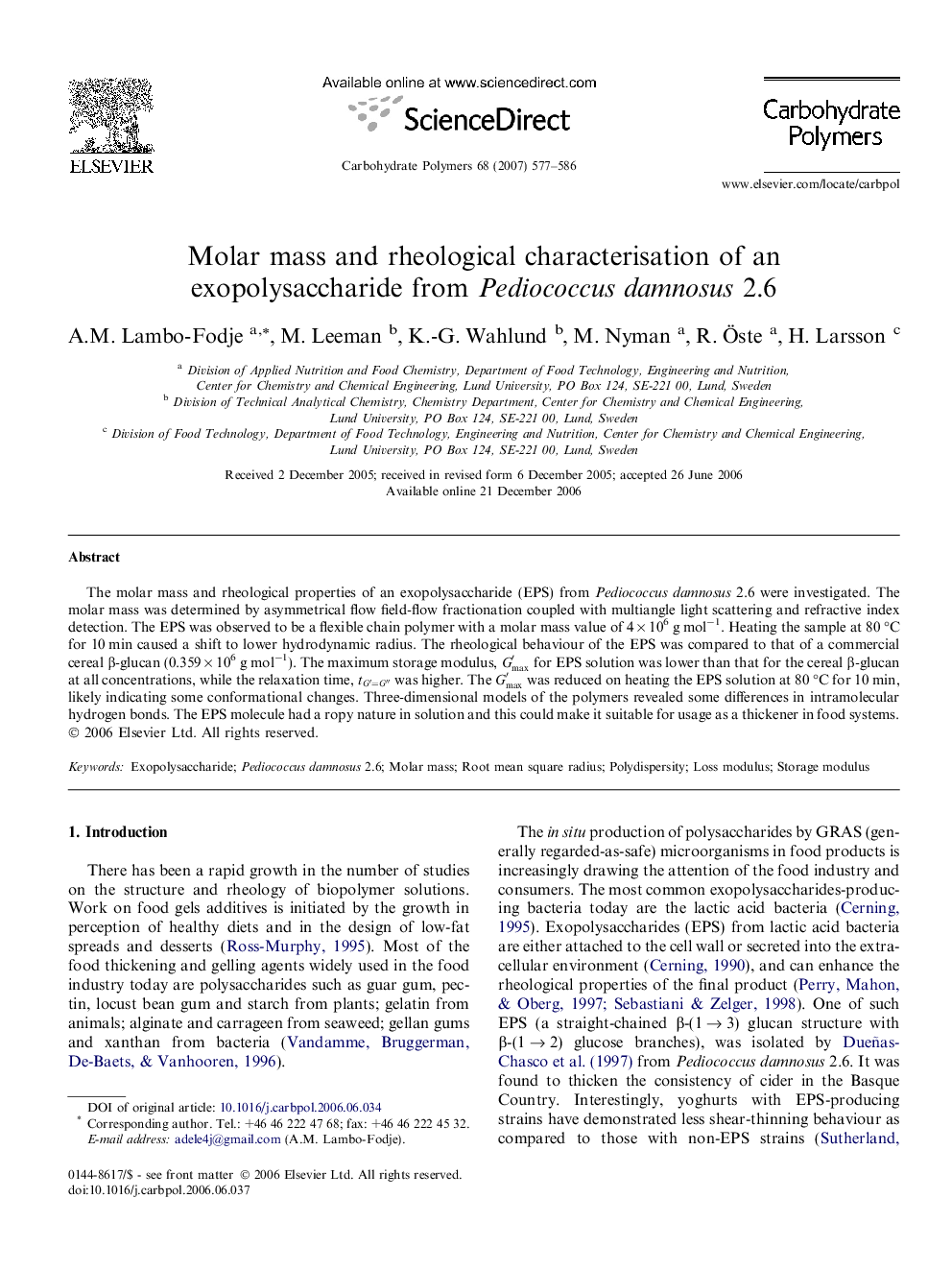| Article ID | Journal | Published Year | Pages | File Type |
|---|---|---|---|---|
| 1385528 | Carbohydrate Polymers | 2007 | 10 Pages |
The molar mass and rheological properties of an exopolysaccharide (EPS) from Pediococcus damnosus 2.6 were investigated. The molar mass was determined by asymmetrical flow field-flow fractionation coupled with multiangle light scattering and refractive index detection. The EPS was observed to be a flexible chain polymer with a molar mass value of 4 × 106 g mol−1. Heating the sample at 80 °C for 10 min caused a shift to lower hydrodynamic radius. The rheological behaviour of the EPS was compared to that of a commercial cereal β-glucan (0.359 × 106 g mol−1). The maximum storage modulus, Gmax′ for EPS solution was lower than that for the cereal β-glucan at all concentrations, while the relaxation time, tG′=G″tG′=G″ was higher. The Gmax′ was reduced on heating the EPS solution at 80 °C for 10 min, likely indicating some conformational changes. Three-dimensional models of the polymers revealed some differences in intramolecular hydrogen bonds. The EPS molecule had a ropy nature in solution and this could make it suitable for usage as a thickener in food systems.
